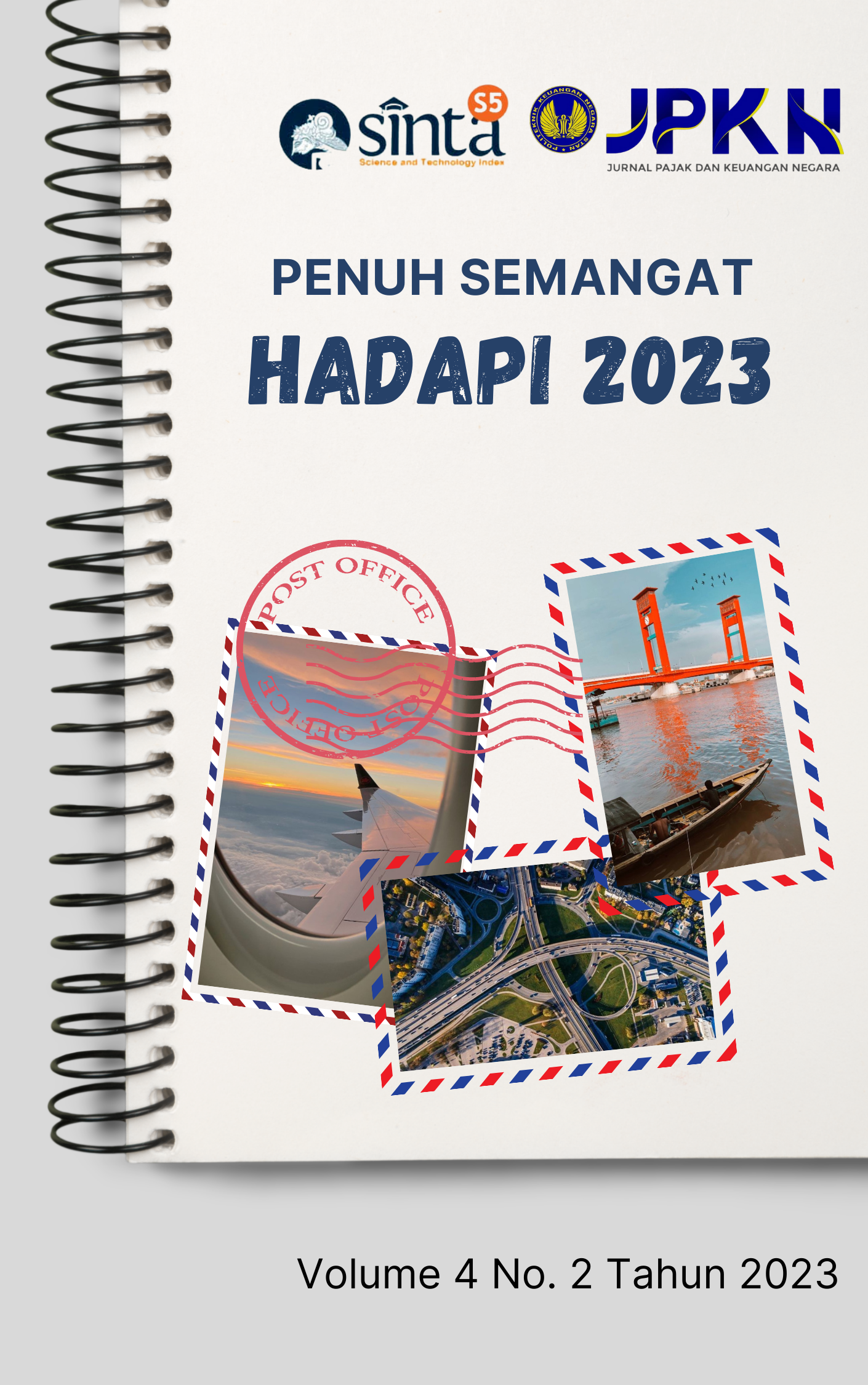Intention Of Muslim And Non-Muslim Indonesian Investors In Investing In Retail Sukuk
DOI:
https://doi.org/10.31092/jpkn.v4i2.1816Keywords:
Intention, Investor, Retail sukuk, Theory of Planned BehaviourAbstract
This study aims to analyze the factors that influence the intention of individual investors, both Muslim and non-Muslim, to invest in Retail Sukuk issued by the Indonesian government using the Theory of Planned Behavior (TPB). This study is quantitative research. Data was obtained by distributing questionnaires that had previously been tested to ensure their validity and reliability. The participant data was processed by 214 participants who came from various levels of society and various cities in Indonesia. Furthermore, the data was processed using the Microsoft Excel application and the Smart PLS-SEM application version 3.3.3. The results show that the intentions of Muslim investors and non-Muslim investors are both significantly determined by their attitude toward investing, subjective norms that exist within them, and perceptions of behavioral control. The government considers the results of this research as input for determining the right strategy to expand the retail sukuk investor base, both Muslim and non-Muslim investors in Indonesia. The limitations of this study are the number of participants which is quite small.
References
Ajzen, I. (1985). From Intentions to Actions: A Theory of Planned Behavior. In J. Kuhl & J. Beckmann (Eds.), Action Control: From Cognition to Behavior (pp. 11–39). Springer. https://doi.org/10.1007/978-3-642-69746-3_2
Ajzen, I. (1991). The theory of planned behavior. Organizational Behavior and Human Decision Processes, 50(2), 179–211. https://doi.org/10.1016/0749-5978(91)90020-T
Ajzen, I. (2002). Perceived behavioral control, Self-Efficacy, Locus of Control, and the Theory of Planned Behavior1. Journal of Applied Social Psychology, 32(4), 665–683. https://doi.org/10.1111/j.1559-1816.2002.tb00236.x
Ajzen, I. (2011). Attitudes, personality and behavior (2. ed., reprint). Open Univ. Press.
Ashidiqi, C., & Arundina, T. (2017). Indonesia Students’s intention to invest in Sukuk: Theory of planned behaviour approach. International Journal of Economic Research, 14, 395–407.
Bakhtiar, F. (2019). Pengaruh Pengetahuan tentang Sukuk terhadap Minat Berinvestasi Sukuk. Ekonomi Syariah Indonesia, 9(1), 42–50.
Bisnis.com, "Obligasi Ritel Masih Akan Diminati Masyarakat 2021 Mendatang, Ini Sebabnya", https://market.bisnis.com/read/20201123/92/1321253/obligasi-ritel-masih-akan-diminati-masyarakat-2021-mendatang-ini-sebabnya.
Ghozali, I. (2008). Model persamaan struktural: Konsep dan aplikasi dengan program AMOS 16.0. Badan Penerbit Universitas Diponegoro.
Ghozali, L., & Latan, L. (2015). Partial least square SEM (PLS-SEM). Partial Least Square.
Haryono, S. (2014). MENGENAL METODE STRUCTURAL EQUATION MODELING (SEM) UNTUK PENELITIAN MANAJEMEN MENGGUNAKAN AMOS 18.00. Jurnal Ekonomi dan Bisnis STIE YPN, VII, 12.
Hastuti, E. S. (2018). SUKUK TABUNGAN: INVESTASI SYARIAH PENDORONG PEMBANGUNAN EKONOMI INKLUSIF. Jurnal Jurisprudence, 7(2), 114–122. https://doi.org/10.23917/jurisprudence.v7i2.4096
Khan, S. U., Khan, I. U., Khan, I., Din, S. U., & Khan, A. U. (2020). Evaluating ṣukūk investment intentions in Pakistan from a social cognitive perspective. ISRA International Journal of Islamic Finance, 12(3), 347–365. https://doi.org/10.1108/IJIF-12-2019-0194
Kurniasari, W. (2014). Perkembangan dan Prospek Sukuk Tinjauan Teoritis. Muqtasid: Jurnal Ekonomi Dan Perbankan Syariah, 5(1), 99–122.
Latifah, S. (2020). Peran Sukuk Surat Berharga Syariah Negara (SBSN) dalam Pertumbuhan Pembangunan Ekonomi Indonesia. Jurnal Ilmiah Ekonomi Islam, 6(3), 421–427. https://doi.org/10.29040/jiei.v6i3.1369
Muhammad, R., Permana, E. N., & Nugraheni, P. (2019). TINGKAT PERMINTAAN SUKUK RITEL: ANALISIS FAKTOR INTERNAL DAN EKSTERNAL. Media Riset Akuntansi, Auditing & Informasi, 19(2), 249–264. https://doi.org/10.25105/mraai.v19i2.4205
Narimawati, U. (2007). Riset manajemen sumber daya manusia. Jakarta: Agung Media.
Peristiwo, H. (2016). ANALISIS MINAT INVESTOR DI KOTA SERANG TERHADAP INVESTASI SYARIAH PADA PASAR MODAL SYARIAH. ISLAMICONOMIC: Jurnal Ekonomi Islam, 7(1), Article 1. https://doi.org/10.32678/ijei.v7i1.7
Saiti, B., Ardo, A. A., & Yumusak, I. G. (2019). Why non-Muslims subscribe to Islamic banking? Qualitative Research in Financial Markets.
Sugiyono. (2008). Metode penelitian pendidikan: (Pendekatan kuantitatif, kualitatif dan R & D). Alfabeta.
Sugiyono, S. (2013). Metode penelitian kualitatif. Alfabeta.
Tahir, I., & Brimble, M. (2011). Islamic investment behaviour. International Journal of Islamic and Middle Eastern Finance and Management, 4(2), 116–130. https://doi.org/10.1108/17538391111144515
Warsame, M. H., & Ireri, E. M. (2016). Does the theory of planned behaviour (TPB) matter in Sukuk investment decisions? Journal of Behavioral and Experimental Finance, 12, 93–100. https://doi.org/10.1016/j.jbef.2016.10.002
Yuliati, L. (2011). FAKTOR-FAKTOR YANG MEMPENGARUHI MINAT MASYARAKAT BERINVESTASI SUKUK. Walisongo: Jurnal Penelitian Sosial Keagamaan, 19(1), 103. https://doi.org/10.21580/ws.19.1.214
Downloads
Published
How to Cite
Issue
Section
License
Copyright (c) 2023 Kuwat Slamet, Riestianty Riestianty, Budiyono Budiyono

This work is licensed under a Creative Commons Attribution 4.0 International License.

This work is licensed under a Creative Commons Attribution 4.0 International License.







